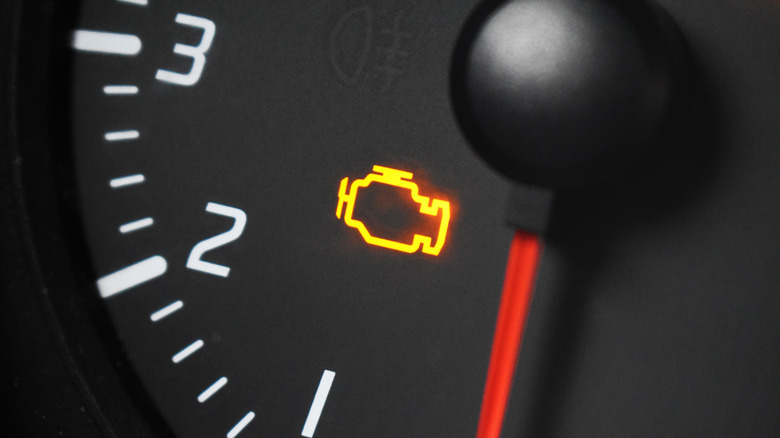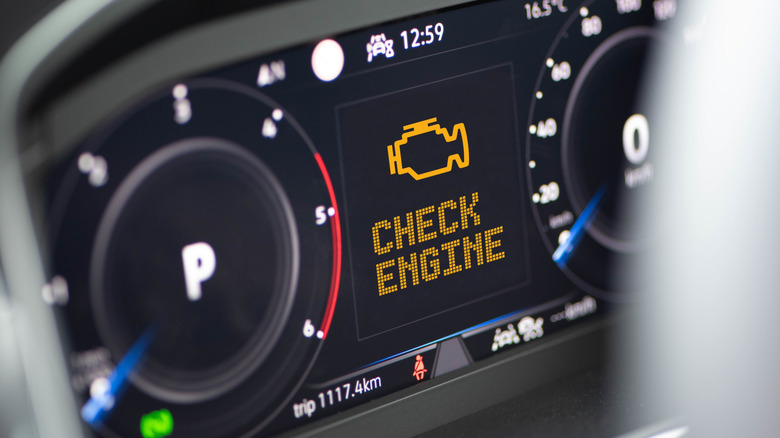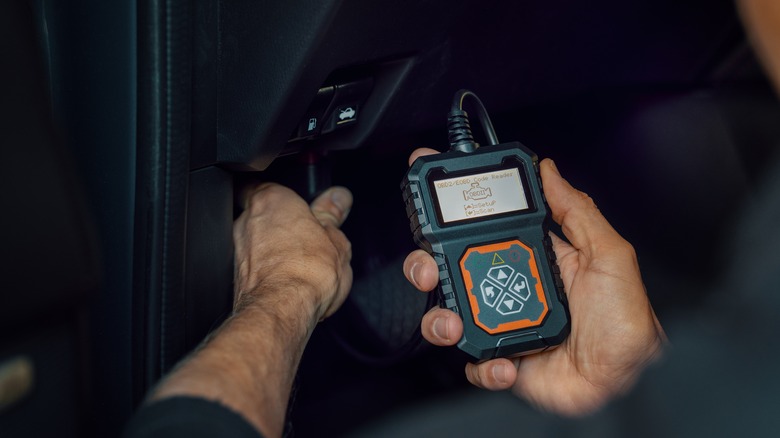Can A Check Engine Light Go Away On Its Own?
We may receive a commission on purchases made from links.
The check engine light is one of those dashboard warning lights drivers dread to see suddenly come on in the middle of driving. First-time car owners may even panic at the sight of this light indicator illuminating, thinking that their car's about to shut down or go into limp home mode. Since the engine is the most vital part of a car, it's understandable for people to assume the worst once the check engine light appears. However, there are actually many reasons for this warning light to go off, including problems with the engine itself or the emission system. In many cases, the culprit could also just be a loose or broken gas cap.
A steady check engine light usually indicates a less serious problem, so you can still drive the car until it is fixed. However, even a minor issue, like a loose cap, needs to be addressed as quickly as possible, not only to switch off the warning light but also to ensure the car's optimum performance. Dashboard warning lights are supposed to stay on until the issue that triggered them is resolved.
Interestingly, a check engine light can indeed go away on its own. When this happens, it does not necessarily mean the issue has been resolved. Instead, the car's computer may have failed to detect the problem during a diagnostic scan, which happens every time the engine is switched on. It does take a few drive cycles and scans before the system disables the check engine light on its own.
What to do if the check engine light comes back on?
If your check engine light shuts off without you doing anything to identify and fix the problem, you can't expect it not to come back on eventually. As mentioned, your car's computer runs a scan, which includes a series of self-diagnostic tests, every time you start the engine. The engine control module, which checks engine function and related problems, will send an alert to the dashboard, which lights up the check engine indicator when it spots the same unresolved issue again. This can start a cycle of the check engine switching off and coming back on intermittently after a few drive cycles when ignored.
It is important to know the reasons why your check engine light may be on, since you can easily address some of them yourself, like replacing the gas cap and spark plugs. For more challenging issues, it's best to have a technician accurately diagnose and repair your vehicle. However, if a technician isn't readily available and you find the warning light to be quite annoying while driving, you might want to consider the simple hack of disconnecting the negative terminal of your car's battery for a minute or two.
This resets your car's computer system, providing a temporary solution to the problem. Do note that this is only applicable when the check engine light is steady. A blinking or flashing check engine light is the biggest sign to not drive your car, as that's indicative of more serious problems in its vital parts.
Why you should invest in a code reader
If you want to play a more proactive role in troubleshooting the underlying issues in your car when any of the warning lights are on, you need to invest in a code reader, also known as the OBD-II scanner. OBD stands for On-Board Diagnostics, a system responsible for diagnosing and reporting problems affecting different car parts and functions. The engine control module is a component of the OBD system. To use a code reader to diagnose your car, you need to connect it to the OBD-II port, which is typically found below the instrument cluster and steering wheel, though it can sometimes be in other locations.
The tool will let you view the codes for the different errors in your vehicle. You can also use it to clear the codes, reset the check engine light, and even access the computer's history (mileage etc.). There are many car readers available online. One excellent option is the ANCEL AD310 Classic Enhanced Universal OBD II Scanner, which is available for $27.99 on Amazon. This device is the No. 1 best seller in Amazon's Code Readers & Scan Tools category, with a 77% five-star rating from over 53,000 reviews, with one of its highlight features being the traditional design that is easy to grip.
A more advanced alternative is the BlueDriver Bluetooth Pro OBD II Scan Tool, which retails for $119.95. Compatible with iPhone and Android devices, the Bluetooth-connected tool has accumulated a 78% five-star rating from over 58,000 users.


